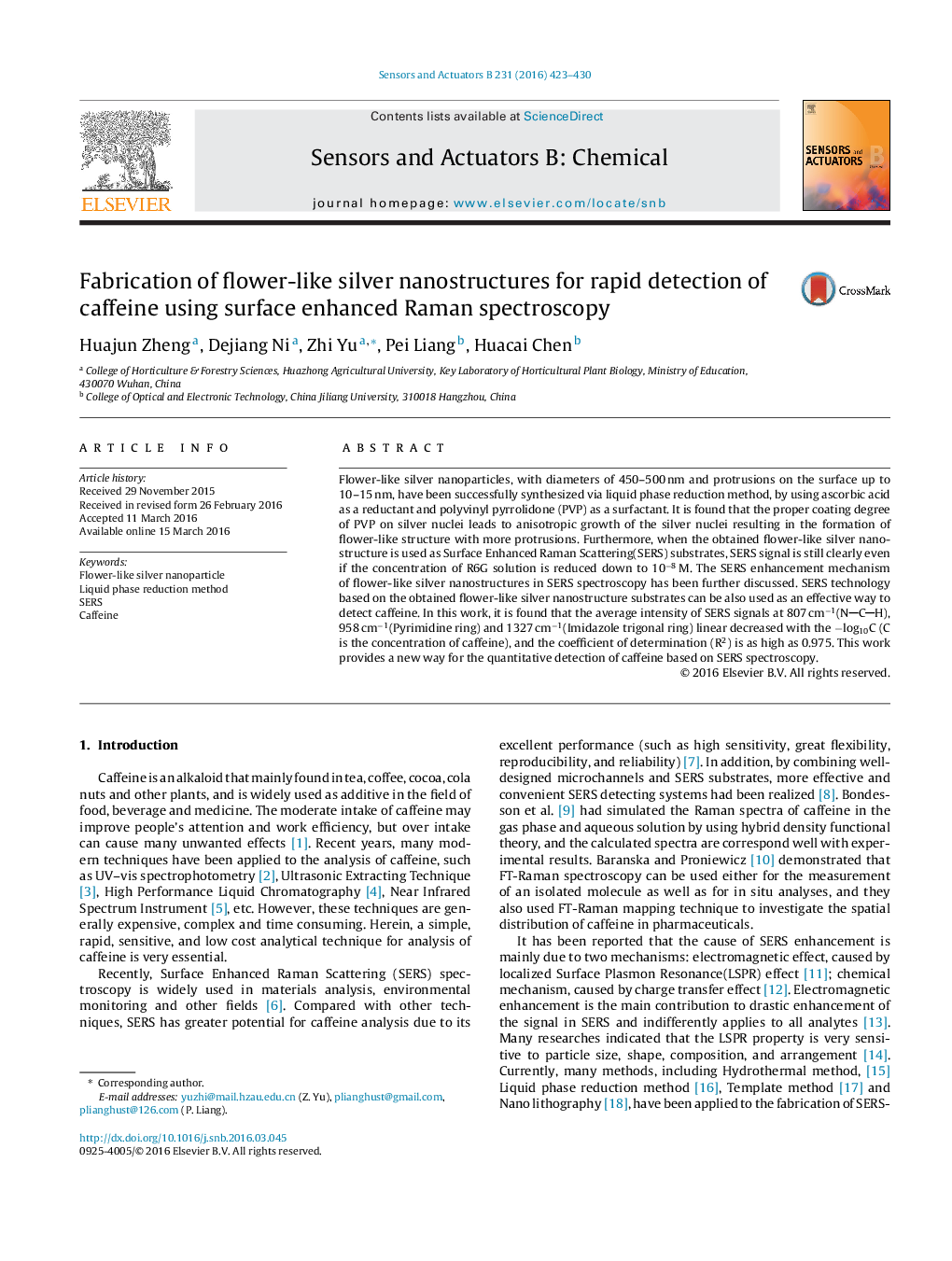| Article ID | Journal | Published Year | Pages | File Type |
|---|---|---|---|---|
| 7144006 | Sensors and Actuators B: Chemical | 2016 | 8 Pages |
Abstract
Flower-like silver nanoparticles, with diameters of 450-500Â nm and protrusions on the surface up to 10-15Â nm, have been successfully synthesized via liquid phase reduction method, by using ascorbic acid as a reductant and polyvinyl pyrrolidone (PVP) as a surfactant. It is found that the proper coating degree of PVP on silver nuclei leads to anisotropic growth of the silver nuclei resulting in the formation of flower-like structure with more protrusions. Furthermore, when the obtained flower-like silver nanostructure is used as Surface Enhanced Raman Scattering(SERS) substrates, SERS signal is still clearly even if the concentration of R6G solution is reduced down to 10â8Â M. The SERS enhancement mechanism of flower-like silver nanostructures in SERS spectroscopy has been further discussed. SERS technology based on the obtained flower-like silver nanostructure substrates can be also used as an effective way to detect caffeine. In this work, it is found that the average intensity of SERS signals at 807Â cmâ1(NCH), 958Â cmâ1(Pyrimidine ring) and 1327Â cmâ1(Imidazole trigonal ring) linear decreased with the âlog10C (C is the concentration of caffeine), and the coefficient of determination (R2) is as high as 0.975. This work provides a new way for the quantitative detection of caffeine based on SERS spectroscopy.
Related Topics
Physical Sciences and Engineering
Chemistry
Analytical Chemistry
Authors
Huajun Zheng, Dejiang Ni, Zhi Yu, Pei Liang, Huacai Chen,
